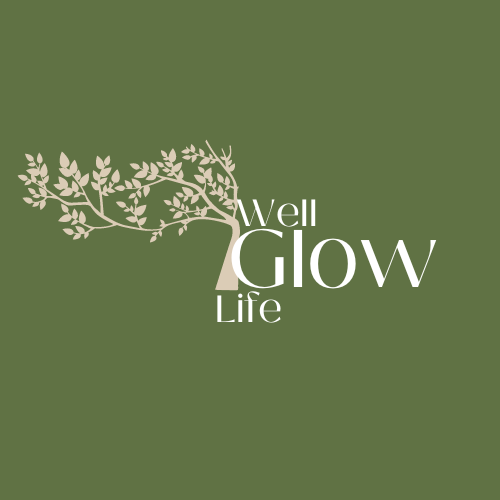When it comes to battling the signs of aging, many of us are on the lookout for effective solutions that are both natural and scientifically backed. Two popular contenders in this arena are Korean Red Ginseng and Retinol. Each has its own unique properties and benefits, and understanding these can help you make an informed choice for your skincare routine.
Key Takeaways
-
Korean Red Ginseng is a natural ingredient known for its antioxidant properties and ability to improve skin elasticity.
-
Retinol is a derivative of Vitamin A that promotes cell turnover and collagen production, reducing wrinkles and acne.
-
Red Ginseng is generally milder on the skin compared to Retinol, which can cause irritation and dryness.
-
Both ingredients can be used for anti-aging, but they work differently, with Ginseng focusing on nourishment and Retinol on renewal.
-
Choosing between the two depends on your skin type, sensitivity, and specific skincare goals.

giExploring Korean Red Ginseng and Retinol for Anti-Aging
In the world of skincare, both Korean Red Ginseng and Retinol are hailed for their anti-aging properties. However, they cater to different needs and skin types. Understanding their individual benefits and how they work can empower you to choose the right one for your skin.
Overview of Korean Red Ginseng
Korean Red Ginseng, a staple in traditional Korean medicine, is derived from the root of the ginseng plant. It’s revered for its ability to enhance overall health and vitality. In skincare, it shines due to its potent antioxidant properties, which help protect the skin from environmental stressors and UV damage.
Besides that, Korean Red Ginseng is known for boosting circulation, which can result in a brighter, more radiant complexion. It is often included in skincare products aimed at improving skin elasticity and reducing the appearance of fine lines.
Understanding Retinol as an Anti-Aging Ingredient
Retinol, a derivative of Vitamin A, is a powerhouse in the skincare industry, particularly for its anti-aging benefits. It works by promoting cell turnover, which means it helps shed dead skin cells and encourages the production of new ones. This process can lead to smoother, more youthful-looking skin.
Most importantly, Retinol is renowned for its ability to stimulate collagen production, a crucial protein for maintaining skin’s firmness and elasticity. It also helps unclog pores, making it a popular choice for those dealing with acne alongside aging concerns.
Key Differences Between the Two
While both Korean Red Ginseng and Retinol offer anti-aging benefits, they do so in different ways. Korean Red Ginseng focuses on nourishing and revitalizing the skin through its natural properties, while Retinol emphasizes renewal by promoting cell turnover and collagen synthesis.
Another significant difference lies in their effects on the skin. Korean Red Ginseng is typically gentle and suitable for most skin types, including sensitive skin. Retinol, on the other hand, can sometimes cause irritation, dryness, or redness, especially when first introduced into a skincare routine.
Anti-Aging Benefits of Korean Red Ginseng
Let’s delve deeper into the specific anti-aging benefits that Korean Red Ginseng offers. Its natural composition makes it a versatile and effective ingredient in skincare.
Boosting Collagen Production
Collagen is vital for keeping our skin firm and youthful. Korean Red Ginseng helps boost collagen production, which can lead to reduced wrinkles and improved skin texture. By maintaining collagen levels, the skin remains plump and supple, resisting the sagging that often comes with age.
Incorporating products with Korean Red Ginseng into your skincare routine can be an excellent strategy for maintaining a youthful complexion over time.
Anti-Aging Benefits of Retinol
Retinol stands as a cornerstone in anti-aging skincare, celebrated for its powerful effects on skin renewal and collagen production. It’s a go-to ingredient for many who are looking to address signs of aging such as fine lines, wrinkles, and uneven skin tone.
Cell Turnover and Renewal
One of Retinol’s primary benefits is its ability to accelerate cell turnover. This means it helps remove old, dead skin cells and promotes the growth of new, healthy ones. As a result, the skin appears more vibrant and youthful. Regular use of Retinol can lead to a significant improvement in skin texture, making it smoother and more even. For more insights, explore the differences between Retinol and Retinoids.
Moreover, by clearing away the old skin cells, Retinol can help unclog pores and reduce the occurrence of acne. This dual action makes it a favorite for those who want to combat both aging and acne simultaneously.
Collagen Synthesis Enhancement
Collagen is crucial for maintaining the skin’s firmness and elasticity. Retinol boosts collagen production, which helps to diminish the appearance of fine lines and wrinkles. By supporting the skin’s natural structure, Retinol can lead to a more youthful and resilient complexion.
Addressing Acne and Wrinkles
Retinol is not just an anti-aging hero; it’s also highly effective in treating acne. By promoting cell turnover and preventing clogged pores, Retinol can significantly reduce acne breakouts. Additionally, its collagen-boosting properties help smooth out acne scars, giving the skin a more uniform appearance.
For those dealing with both acne and signs of aging, Retinol offers a comprehensive solution, targeting both concerns with a single ingredient.
Side Effects and Considerations
While Retinol offers impressive benefits, it’s essential to be aware of its potential side effects and considerations before incorporating it into your skincare routine. For more information, you can read about the differences between retinol and other retinoids.
Sensitivity: What to Expect
Retinol can cause skin irritation, especially for those new to the ingredient. Common side effects include redness, dryness, and peeling. It’s crucial to start with a lower concentration and gradually increase usage as your skin builds tolerance.
Besides that, Retinol can increase skin sensitivity to sunlight, so it’s important to use sunscreen daily when using Retinol products. This will help protect your skin from UV damage and prevent further irritation. For more information on Retinol, check out this detailed comparison of Retinol vs Retinoids.
For individuals with sensitive skin, it’s advisable to consult with a dermatologist before starting Retinol to determine the appropriate concentration and usage frequency.
Combining or Alternating Use
When considering Korean Red Ginseng and Retinol, it’s possible to use them together or alternate their use, depending on your skin’s needs. While Retinol focuses on renewal and collagen production, Korean Red Ginseng provides nourishment and antioxidant protection.
To minimize potential irritation, you might choose to use Retinol at night and Korean Red Ginseng during the day. Alternatively, some people prefer to use Retinol a few times a week and incorporate Korean Red Ginseng on the other days for a balanced approach.
Real-Life Experiences and Reviews
Hearing from others who have used these ingredients can provide valuable insights and help you decide which might be best for you.
Testimonials on Korean Red Ginseng Use
Many users of Korean Red Ginseng report noticeable improvements in their skin’s texture and elasticity. One user shared, “After a few weeks of using a Korean Red Ginseng serum, my skin felt firmer and looked brighter. I love how gentle it is on my sensitive skin.” For more insights on skin solutions, explore the popularity of skin solutions in Asia.
Another user noted, “I switched to Korean Red Ginseng after experiencing irritation with Retinol. It’s been a game-changer for my dry skin, providing hydration and a healthy glow.”
User Experiences with Retinol
Retinol has long been a favorite among skincare enthusiasts for its potent anti-aging effects. Many users report significant improvements in skin texture and a reduction in fine lines. One user mentioned, “After incorporating Retinol into my nightly routine, my skin feels smoother, and the fine lines around my eyes have noticeably diminished.”
However, it’s important to note that some individuals experience initial irritation when starting Retinol. “At first, my skin was quite red and flaky,” another user shared. “But after a few weeks, my skin adjusted, and the results were worth it.” For those dealing with similar issues, exploring skin solutions like La Roche-Posay Cicaplast Baume B5 might be beneficial.
“Retinol transformed my skin. It took patience, but the glow and smoothness it brought were incredible.”
These experiences highlight the importance of perseverance and gradual introduction when using Retinol.
Conclusion: Choosing the Right Ingredient
When deciding between Korean Red Ginseng and Retinol, it’s essential to consider your skin type, sensitivity, and specific skincare goals. Both ingredients offer unique benefits, but they work differently to achieve anti-aging effects.
Ultimately, the best choice depends on your individual needs and how your skin reacts to each ingredient. Korean Red Ginseng may be more suitable for those with sensitive skin, while Retinol might be ideal for those seeking more dramatic results.
Recommendations for Different Skin Types
For sensitive skin, I recommend starting with Korean Red Ginseng. Its gentle, nourishing properties can provide anti-aging benefits without causing irritation.
If you have oily or acne-prone skin, Retinol could be a better fit. Its ability to unclog pores and reduce acne while promoting collagen production makes it a versatile choice.
For combination skin, consider using both ingredients strategically. Alternate between them to enjoy the benefits of each without overwhelming your skin.
Factors Influencing Your Choice
Several factors can influence your decision when choosing between Korean Red Ginseng and Retinol. Consider your skin’s current condition and any specific concerns you wish to address, such as wrinkles or acne.
Additionally, think about your lifestyle and skincare routine. If you prefer a simpler routine, Korean Red Ginseng may be easier to incorporate. However, if you’re willing to invest time in a more intensive regimen, Retinol could offer more noticeable results.
Frequently Asked Questions (FAQ)
Many people have questions about using Korean Red Ginseng and Retinol in their skincare routines. Here are some of the most common inquiries and their answers.
These insights can help guide you in making the best decision for your skin’s needs.
Can I Use Korean Red Ginseng and Retinol Together?
Yes, you can use both Korean Red Ginseng and Retinol in your skincare routine. However, it’s best to alternate their use to minimize potential irritation. Consider using Retinol at night and Korean Red Ginseng during the day for a balanced approach.
How Long Before I See Results with Korean Red Ginseng?
Results with Korean Red Ginseng can vary depending on individual skin types and concerns. Generally, you may begin to notice improvements in skin texture and elasticity within a few weeks of consistent use. For best results, incorporate it into your routine regularly.
Patience is key, as natural ingredients often take time to show their full effects. However, the gentle nature of Korean Red Ginseng makes it worth the wait.
What Are the Common Side Effects of Retinol?
Common side effects of Retinol include redness, dryness, and peeling, especially when first introduced to the skin. To minimize these effects, start with a lower concentration and gradually increase usage as your skin builds tolerance.
Always use sunscreen during the day when using Retinol, as it can increase skin sensitivity to sunlight.
Which Is Better for Sensitive Skin?
For sensitive skin, Korean Red Ginseng is generally a better choice due to its gentle and nourishing properties. It provides anti-aging benefits without the irritation that Retinol can sometimes cause.
However, if you wish to try Retinol, consult with a dermatologist to determine the appropriate concentration and usage frequency for your skin type.
Ultimately, listen to your skin and adjust your routine based on how it responds to each ingredient.

Leave a Reply